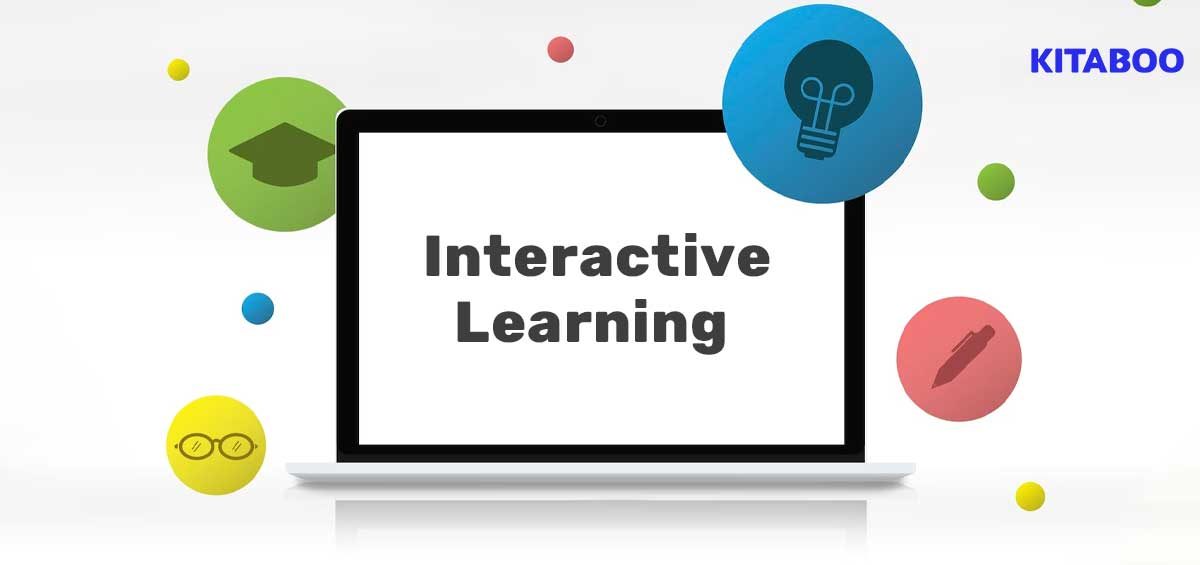In the ever-evolving landscape of K12 education, interactive learning modules have emerged as a dynamic and effective approach to engaging learners. These modules, with their immersive elements, go beyond traditional methods of instruction, captivating learners and transforming their learning experience.
In this blog, we’ll explore some ways to unleash the benefits of interactive learning modules, and shed light on their impact and value for K12 educators, publishers, and other stakeholders. Here’s what we’ll cover.
Table of Contents
I. Unleashing 10 Benefits of Interactive K12 Learning Modules
- Enhanced Engagement
- Improved Retention
- Deeper Understanding
- Personalized Learning
- Flexibility and Accessibility
- Real-Time Assessments
- Collaborative Learning Opportunities
- Engaging Multimedia Elements
- Scalability and Cost-Effectiveness
- Continuous Improvements and Updates
II. Conclusion
Unleashing 10 Benefits of Interactive K12 Learning Modules
1. Enhanced Engagement
As the name suggests, interactive learning modules score over traditional learning methods, because they encourage active participation. Through interactive simulations, gamified elements, and immersive activities, these modules motivate students to actively explore the content they are learning. This sparks curiosity and fosters a sense of ownership over their individual learning journeys.
Interactive modules create an environment where students can interact with the content, make choices, and experience the consequences of their decisions i.e. – it keeps students actively engaged, reducing distractions and promoting focused attention. Apart from this, active learning also promotes the development of critical thinking skills, problem-solving abilities, and creativity.
Another aspect of interactive learning modules that enhances engagement are the feedback mechanisms they provide. The feedback a student receives is instantaneous. This can help reinforce positive learning behaviors, correct mistakes immediately, and encourage students to regularly reflect on their progress.
2. Improved Retention
Active learning not only improves engagement levels, it also improves student retention. When learners actively engage with interactive elements such as simulations, games, and exercises, they form stronger neural connections and associations with the content. This reinforces the subject-matter being studied.
The immediate feedback loop mentioned above also plays a crucial role in memory consolidation and content reinforcement.
3. Deeper Understanding
Traditional learning methods often rely on the passive absorption of information. In contrast, interactive modules encourage students to actively explore, analyze, and apply their knowledge. This leads to a deeper understanding of complex concepts.
By immersing students in hands-on activities and problem-solving exercises, interactive modules allow them to manipulate variables, make observations, and draw their own conclusions. This experiential approach provides a holistic understanding of concepts.
Additionally, by its very nature, interactive modules provide opportunities for students to engage in critical thinking and higher-order cognitive processes. This helps them better grasp theoretical concepts while also also enabling them to see the practical applications and relevance of their learning. All leading to a deeper understanding of their lessons.
4. Personalized Learning
Personalized learning acknowledges that every K12 student has different strengths, interests, and learning styles. With this assumption, interactive modules tailor the content and pace of instruction to meet every child’s needs.
Using adaptive learning technologies that analyze learners’ performance, preferences, and progress, these modules dynamically adjust the content, difficulty level, and sequencing of activities. Students receive targeted recommendations, additional resources, and timely feedback that focus on areas of improvement, specific to them.
This personalization promotes learner autonomy. Students can explore topics of interest, delve deeper into challenging concepts, or accelerate through familiar content. Thus, fostering a sense of empowerment and engagement, enabling learners to feel seen and supported through their coursework.
5. Flexibility and Accessibility
Whether it’s through a computer, tablet, or mobile device, interactive learning modules break free from the constraints of traditional classroom settings and rigid schedules. This gives students the flexibility and accessibility to set the pace of their own learning.
The self-paced nature of interactive learning modules accommodates the diverse learning styles and preferences of individuals. This flexibility also enables students to revisit specific sections or activities as needed, reinforcing their understanding of key concepts.
Additionally, features such as closed captions for videos, alternative text for images, and compatibility with screen readers make the content more accessible for learners with visual or hearing impairments. User-friendly navigation and clear instructions further enhance accessibility for all students.
6. Real-Time Assessments
In the old days, once an assignment was submitted, students would wait for their educators to go through each one and share their assessments. This lag in receiving feedback often led to a child forgetting what they had learnt a few weeks earlier. Interactive modules bridge this gap.
With real-time assessments, students receive immediate feedback that allows them to gauge their progress and make necessary adjustments. Through interactive quizzes, activities, and assessments embedded within the modules, students can actively participate in self-assessments, ensuring a deeper understanding of the content.
Both K12 educators and publishers can leverage these real-time assessment capabilities to gather valuable data. By analyzing learner performance, they can gain insights into the effectiveness of the instructional content and identify areas where additional support may be needed. This data-driven approach allows for targeted instructional planning and intervention, ultimately leading to better learning outcomes.
7. Collaborative Learning Opportunities
Human beings are social creatures, and collaboration is a key life skill every student needs to have. Interactive learning modules provide a platform for K12 students to engage in group activities, discussions, and problem-solving exercises, both synchronously and asynchronously. These collaborative learning opportunities foster a sense of community and promote teamwork amongst learners.
Students can share their perspectives, insights, and solutions, creating a dynamic learning environment. Through these collaborative activities, they benefit from diverse perspectives and multiple approaches to problem-solving approaches.
When students collaborate, they take on different roles and responsibilities, fostering a sense of accountability and encouraging active participation. They learn from each other, build upon each other’s knowledge, and collectively construct meaning.
8. Engaging Multimedia Elements
Visual components help make abstract ideas more tangible. Videos and animations can illustrate processes, demonstrate experiments, or provide real-life examples, bringing the content to life. Visually grasping subject matter makes it easier for students to comprehend and remember it.
Videos, animations, interactive graphics, and audio are a few examples of the kind of multimedia elements that interactive learning modules use. These graphics and simulations allow students to manipulate variables, explore cause-and-effect relationships, and visualize data in real time.
By leveraging the power of engaging multimedia elements interactive modules appeal to different learning styles and enhance understanding.
9. Scalability and Cost-Effectiveness
The scalability and cost-effectiveness of interactive learning modules plays a huge role in their popularity amongst K12 educators and publishers.
While these modules may require a higher initial investment, once deployed they can be used repeatedly, easily updated and shared with as many students as needed. Over time, this reduces costs drastically. They also eliminate the expenses associated with reprinting or repurchasing traditional learning resources.
For educational institutions this means reaching a wider audience without the constraints of a physical classroom. This scalability is particularly valuable in distance learning or blended learning scenarios, where learners can access the modules remotely at their convenience. These modules can also be implemented easily at a large-scale across multiple campuses.
10. Continuous Improvements and Updates
Change is a constant, and at the rate K12 education is changing, keeping up has become a necessity.
Interactive learning modules can be easily modified, refined, and enhanced to ensure their relevance and effectiveness. Through learner feedback, mechanisms such as surveys, quizzes, and analytics, educators and publishers gather valuable insights into the strengths and weaknesses of their modules.
This feedback allows them to make data-driven decisions and implement necessary improvements to enhance the overall learning experience. It could involve updating the content to reflect the latest information, refining interactive activities based on student performance, or incorporating additional resources to further support understanding.
Moreover, as educational trends and technologies advance, interactive learning modules can be updated to incorporate new features and functionalities. This ensures that the modules remain aligned with the latest pedagogical practices, emerging technologies, and instructional methodologies. Regular updates keep the content fresh, engaging, and relevant, providing learners with the most up-to-date and effective learning experiences possible.
Conclusion
It’s clear to see that interactive learning modules truly have the power to transform K12 education. The engaging and immersive nature of these modules improves student engagement, retention, and understanding. They also give educators and publishers the ability to create and deliver effective learning content like never before.
However, in order to unlock the full potential of interactive learning, you need the help of a digital publishing platform such as KITABOO. Designed specifically for education, we can help you create, publish and distribute your K12 content, quickly and securely.
Join us for a demo call today and experience firsthand how interactive learning can revolutionize education.
Discover How An Ebook Conversion, Publishing & Distribution Platform Can Help You
Kitaboo is a cloud-based content platform to create-publish & securely distribute interactive mobile-ready ebooks.
You May Also Like







